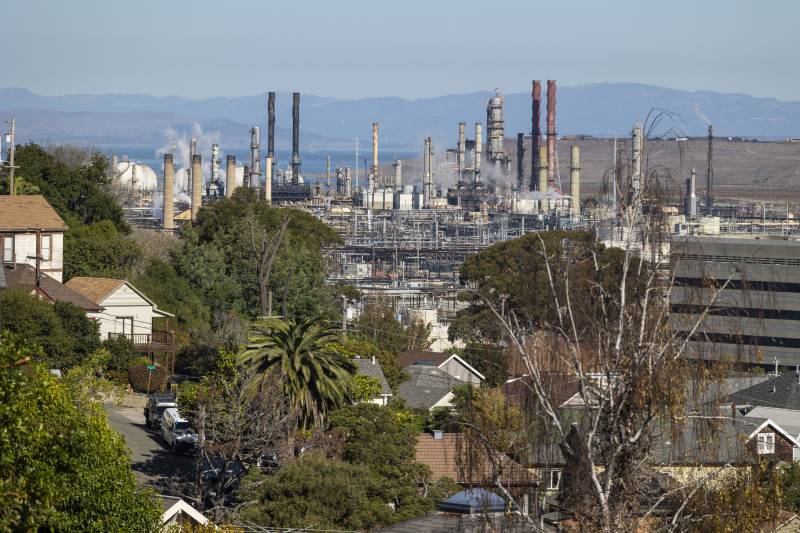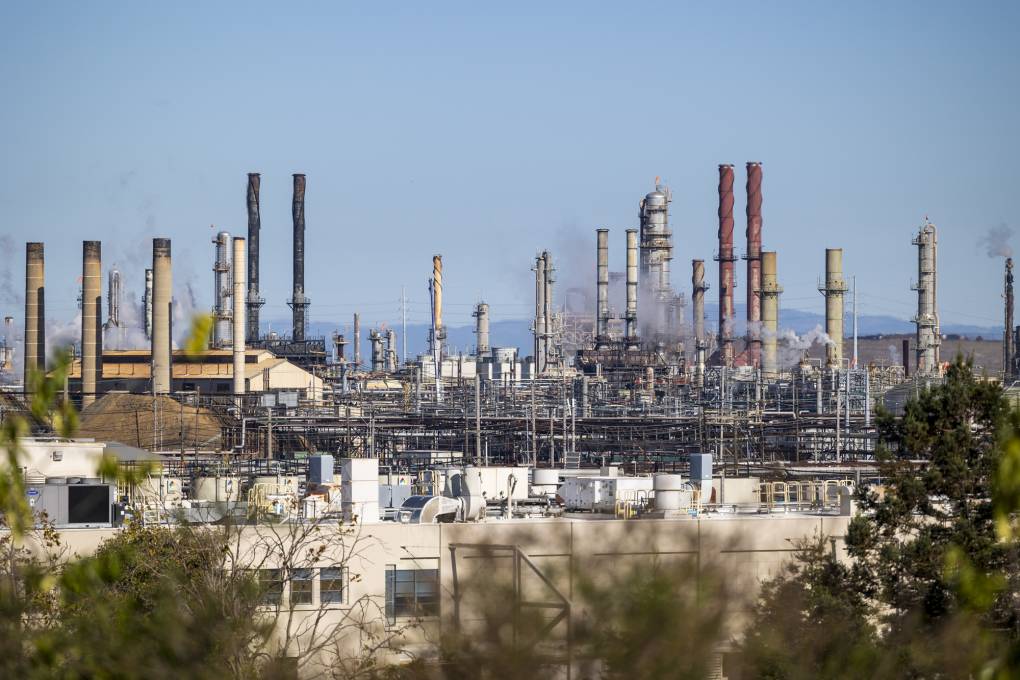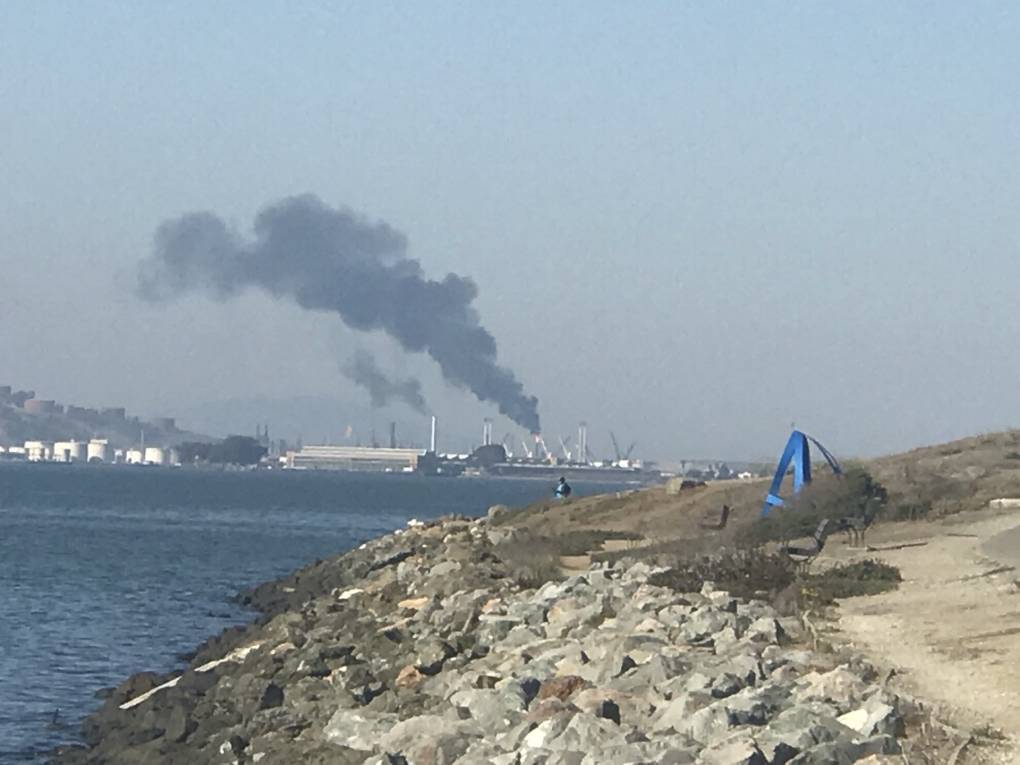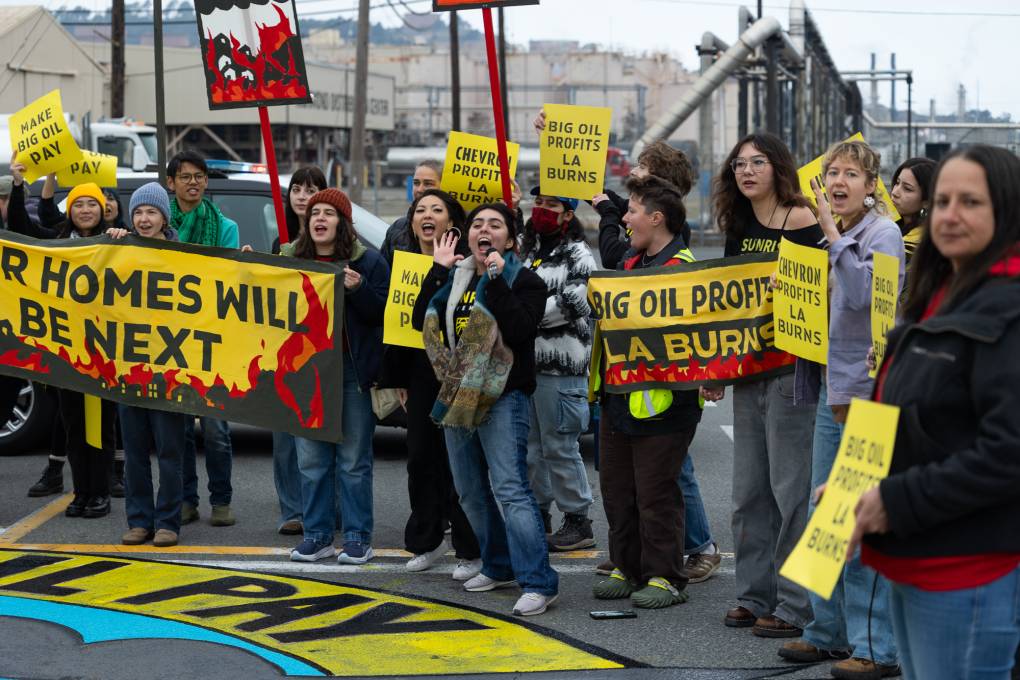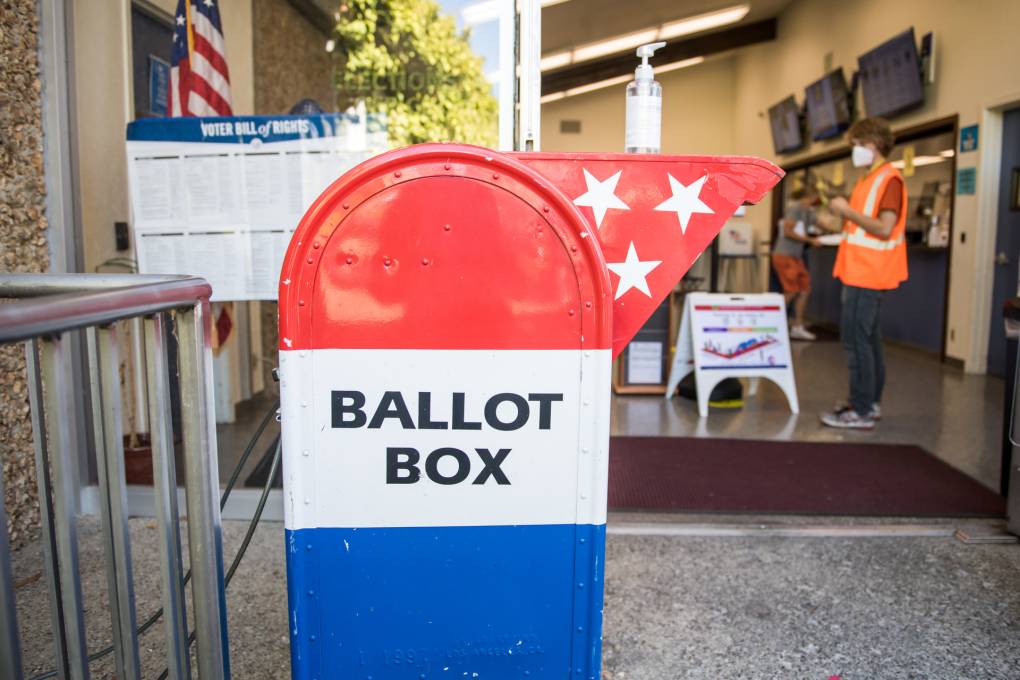Chevron says it informs the public and the air district about its releases. The company points out that residents can check real-time air quality data through the refinery’s fenceline monitoring system. The causes of many flaring events are posted several months later on the air district’s website.
“Chevron Richmond also will be implementing various improvements to our flare monitoring and sampling systems and setting up ways to discuss flaring events and other air quality issues directly with our community,” the company said through its representative.
The 71 violations for the October 2021 incident involve times in which Chevron broke public nuisance, permit condition, visible emission and flare monitoring regulations, according to Kristine Roselius, an air district spokesperson. But the settlement essentially obscures the fine amount for each penalty.
“We accounted for the seriousness of these violations in determining an appropriate overall penalty amount for all the covered violations, but there is no allocation of specific dollar amounts to each individual violation, Roselius said in an email.
In the last decade, the oil industry has successfully killed or delayed legislative attempts to increase penalties on refineries that violate air quality laws in California. The most recent bill, proposed by Assemblymember Buffy Wicks (D-Oakland), would increase the ceiling of many of those penalties to $30,000 per violation. That bill, AB 1465, is on hold.
Air district officials say 13 of Chevron’s violations settled in the recent deal were tied to an incident on Nov. 2, 2020, when an incorrectly labeled electrical diagram caused a power outage leading to the flaring of more than 100,000 pounds of sulfur dioxide and other chemicals.
The agency says 11 other violations were connected to a malfunction at the Richmond refinery on March 9, 2023, when a hydrogen-producing plant tripped offline thanks to an electrical equipment malfunction. On the same day, a fire broke out thanks to a pump seal leak.
For years, Chevron’s Richmond refinery has flared more than the Bay Area’s other refineries.
The company argues that its “flaring performance has been steadily improving over the past few years.”
“To supplement these efforts, we will be formalizing an operator training program related to flare reduction and conducting a comprehensive assessment of previous flaring events to identify if any additional corrective actions are warranted,” the company said.
